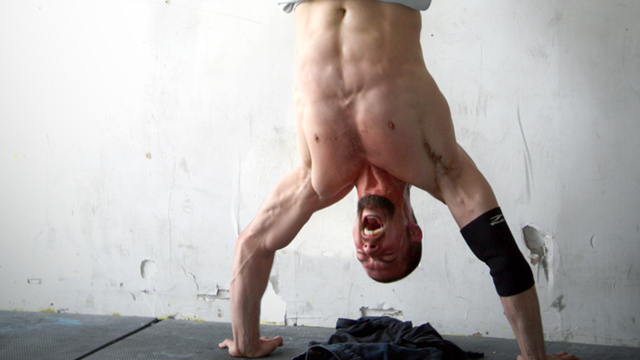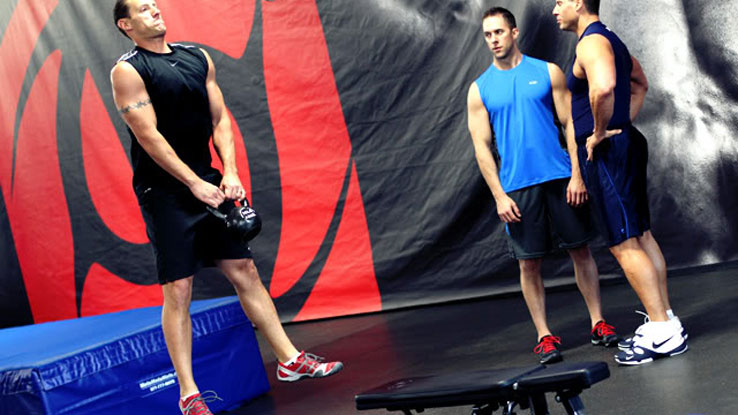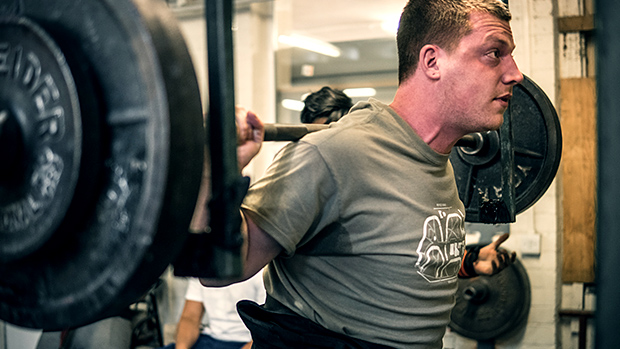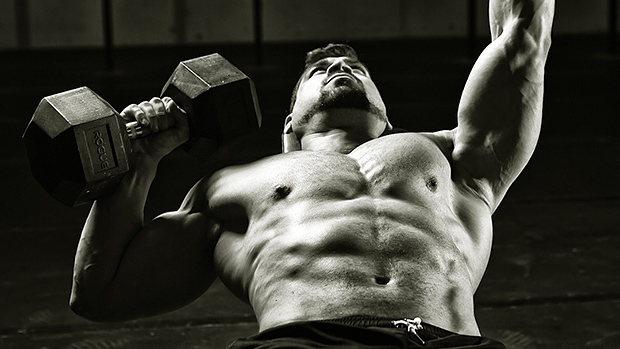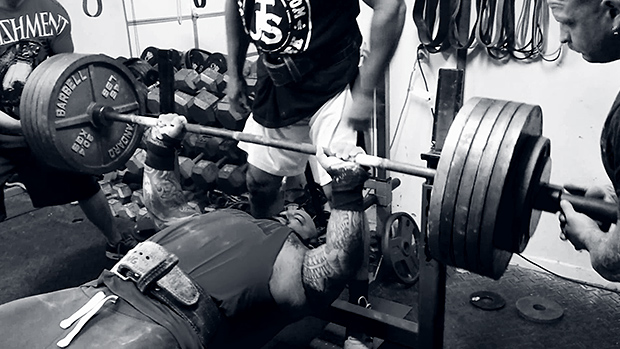There are no ideal routines or perfect methods. The bottom line is results. Either you're stronger, have more endurance, a greater resistance to injury, or perform better in your sport. That's all that matters.
Yet for many trainees, this results-first approach is too simplistic. For them, the more complex the problem, the more flamboyant the cure has to be. Rather than follow a simple, specific plan, they get caught up in exotic treadmills of ''latest and best."
There is no such thing as best, there's only different.
Measurable results within the framework of health, safety, and time management are the key. Why spend three times the amount of training time for 1% better results if you don't have competitive ambition? Wouldn't a program that offered really good results and allowed you a social life and family time be well worth the investment?
The basics are usually easy to remember. If a methodology is too complex, it creates a fabric that's easily torn by problems. If something goes wrong, it's hard to tell what the issue is as there's too much going on all the time.
Let's eliminate the inessential and focus on simplicity and progression.
In a recent forum post, TNation contributor Jack Reape was discussing hypertrophy. For a guy who can squat 700 pounds for a double, it seemed odd that he would mention a body weight routine along with the usual dose of extra heavy iron. His quote:
"As many sets as it takes to get 25 dips, pull-ups, handstand push-ups, and pistols. Then when you progress, go to 40. Then 50. Add weight and go back to 25."
I asked him to explain the history of this routine and why he felt it was valid. He said, "It's my own idea, but based on a combination of ideas from Ronnie Coleman (do 25 pull-ups in as many sets as it takes to get there) and Bill Starr (25-50 reps is the optimal range of volume for bodybuilding), amongst others. I'm a big fan of bodyweight work. I think 25-50 reps is the right volume range for non-freaky natural athletes."
When Jack Reape speaks, I listen. Pretty solid advice. Simple advice. There's not a lot to screw up. Kind of like childproofing, except for adults.
Even with a body weight routine alone, some people, due to lack of strength, specific build, or limitations in movement, can't do the harder callisthenic exercises. There are some preliminary drills that will build strength to get there.
Squat, Chin, and Press
Consider the basics of human movement: Squat, Pull, and Push. That gives us three categories, A, B, and C. Inside each category will be three exercises, listed from easiest to hardest. Of course, depending on body size and leverage, there's some wiggle room here. When weight is added, work in small increments, focusing on long-term gain. A well-fitted weight vest is your best bet, but other tools are certainly acceptable.
Category A: Squat
Tall Kneeling Get Up
The tall kneeling position gives many people trouble due to stability issues.
Start on a soft, forgiving surface and kneel with your thighs close and gluteus region fully contracted. Practice without weight. The hands should be held behind the neck in a "prisoner or hostage" style. This forces good posture and transfers the stress to the lower body.
Now smoothly swing one leg forward into a lunge position. Do not swing it wide, but in a straight line. Once it's firmly planted, come to a standing position with both feet together. Reverse the process and return to the tall kneeling position. Endeavor to keep perfect posture throughout the drill.
Now repeat with the other leg. Your repetitions for your first workout should be at least 25 per leg.
Airborne Lunge
The airborne lunge is usually a preliminary drill used to learn the pistol, but it has its own unique value. Although there are many permutations, we'll use the standard version in this routine.
Only attempt this on a soft surface. You may want to add padding below the floating knee in case you lose your balance. A yoga block is a good choice.
Begin standing on one leg, the other leg behind you with the same-side arm reaching back and keeping it immobile by grabbing the instep. The other arm is extended forward for balance.
Slowly bend the knee of the supporting leg and lower till the knee of the immobilized leg gently kisses the ground. Immediately stand upright, maintaining good balance and form. Repeat for the appropriate amount of repetitions and then work the other leg.
Pistol

The pistol is a one-legged squat done with the other leg held in front of you. There are ample tutorials online and on YouTube so an explanation here is an exercise in repetition. Most athletes fall short because of balance and flexibility issues. This exercise is also a great diagnostic check to look for mobility issues.
Here's a hint: You may want to start with a weight held in front of you at arms' length. The counterbalance will make stability easier but the intensity on the thigh muscles will increase.
Category B: Pull
Suspended Row
The suspended row is a good starting point in the pulling category. No special expensive apparatus required, no need to spend hundreds of dollars on nylon straps invented by entrepreneurial commandos. A heavy segment of rope with loops tied onto each end thrown over a garage rafter or tree branch is adequate.
The version in this program has the feet elevated as well. The body starts in a position that's parallel to the ground and under tension, rather than at rest. Keep the body rigid with no sagging. Pulling with the elbows close to the sides will allow you to use the most resistance, when you're capable of adding it, of course.
Chin-Up
The chin-up is a palms supinated pull from an overhead bar. If you can't do one, you're either too weak or too fat. Try backing up to the previous drill, the suspended row, and do it until you're stronger.
There's nothing special here. Keep movement speed in this and all the exercises smooth and slower. It's not an exercise in compensatory acceleration or in the Westside Barbell Dynamic Method. These drills are grinds.
Pull-Up
The pull-up is the same as the chin-up but with a pronated grip. This essentially weakens the degree of elbow flexion. However, by pulling the chest or waist to the bar, you can increase the range of motion. Just find a standard form of this increased range of motion and stick to it so that results and progression are measurable. A concise recording process is important for improvement.

Category C: Push
Suspended Push-Up
The suspended push-up keeps you honest about stability. The same rope over the rafter can be used if exotic online training gadgets aren't handy. The feet should be elevated so the starting position is parallel to the ground and the body isn't relaxed, but holding a plank. Keep the arms close to the torso and the entire body rigid with tension.
One-Arm Push-Up
The one-arm push-up, like its cousin the pistol, is the subject of massive amounts of instructional material online and elsewhere. It's an intense exercise in body tension and doubles as a hardcore abdominal drill. Getting to 50 total reps before adding weight won't be easy but will be well worth your effort.
Handstand Push-Up
Handstand push-ups will be done against the wall, slowly, with the hands placed on push-up handles or parallettes. There are no extra points given for free standing ones – this is about fitness, not gymnastics. The increased range of motion of the parallettes will also improve time under tension.
You can gaze at the ground, which arches the back and transfers stress to the upper chest. You can also gaze across the room with a straight back and treat this as a type of inverted press behind the neck. It all depends upon your needs.
The Program
This program can be done two or three times per week depending upon your other activity, training, and rest. It's important to take a back-off week every three to five weeks. Do 50% of the poundage at a much-reduced effort during the back-off week. If there's one secret besides proper sleep, this is it.
This workout can be morphed by focusing on extended sets, like 25 to 50 straight repetitions with tiny increases in weight for increased endurance. Another way would be to add resistance and do a density training format of a high-set, low-rep nature.
The most common method is to address the toughest drills for your individual ability with many low repetition sets. In other words, there's a lot of flexibility here.
There's a problem with this routine, however. Many body weight routine zealots won't see it, but you don't actually pick anything off the ground.
They call it weight lifting for a reason. The stimulus of moving an externally fixed source of weight is highly stimulatory for the development of increased strength and size. So why not include some iron?
Don't turn this into an either/or situation or another Internet argument. The part that's missing – a big pull off of the ground – is begging to be filled with the deadlift. Does it have to be a risky series of double or triples at a near-limit weight? Of course not.
Enter The Ghost
The "Green Ghost" is Eddie Kowacz, a former Marine, SWAT Operative, corrections officer, lifetime martial artist, and strength trainer. His ability to cut away the unessential is profound. The following routine, elegant in its simplicity, is his.
Green Ghost Volume Deadlift Routine
Percentages of deadlift 1RM: no less than 50%, no more than 65%
- Reps per set: 3-5
- Sets per workout: 10-20
- Rest: No less than one minute, no more than two minutes
- Frequency: Every third day, i.e., Mon/Thu/Sun/Wed/Sat
Mix n' match sets/reps/percentages as needed.
- Every third or fifth workout: Deadlift for 3-5 sets of 10-12 reps with tolerable percentages.
Other moves are okay as long as they don't compromise the deadlift. Presses are good on off days. Also work abs 3-5 days per week.
A couple of notes here.
This routine requires a back-off week between 3 and 5 weeks, consistent with the three-exercise routine above. The abdominal work can be standalone and include standing crunches with a jump stretch band or hanging leg raises. The body weight drills alone will scorch your midsection.
Here's a sample weekly template.
- Day 1: Bodyweight routine
- Day 2: Deadlift
- Day 3: Off
- Day 4: Bodyweight routine
- Day 5: Deadlift
- Day 6/7: Off.
Take extra days as needed.
Repeat for three weeks then take a back off week.
The other possibility if you're very active or have little time:
- Day 1: Bodyweight routine
- Day 2: Off
- Day 3: Deadlift
- And so on.
Take an extra day when you need and a back off week around 3 to 5 weeks.
Simplest is Best
This program can fit into a very unorganized lifestyle. Limited time in the gym will not stop you since you only have to focus on deadlifting loads that are nowhere near your strength limit. The other three groupings can be done at home with little training gear, or on the road.
If you're frequently out of town, you can ditch the deadlifts and do some bodyweight-only drills in your hotel room. Let the normal activity of travel, namely walking, running, swimming, and asking people who don't speak English for directions give you a much-needed break that helps restore recovery ability.
Many roads may reach the same destination, but the simplest route is always the best. Give this routine a shot and see if you don't notice remarkable improvements in strength, mobility, even hypertrophy, as well as dramatically improved recuperation.
Save the complex programs and endless arguments about strength training dogma for those who care more about talking and typing than doing. Remember, the bottom line is results, and this simple program will deliver them.

